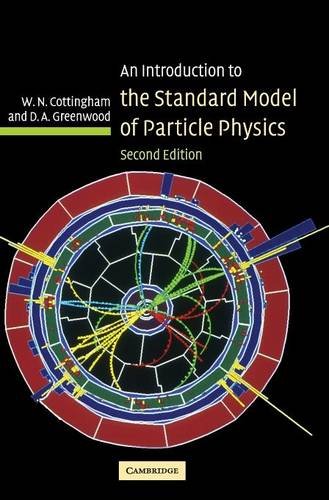An Introduction to the Standard Model of Particle Physics pdf free
Par cleveland bernard le mercredi, juin 7 2017, 05:56 - Lien permanent
An Introduction to the Standard Model of Particle Physics by D. A. Greenwood, W. N. Cottingham


An Introduction to the Standard Model of Particle Physics D. A. Greenwood, W. N. Cottingham ebook
Page: 294
Publisher: Cambridge University Press
ISBN: 0521852498, 9780521852494
Format: pdf
This lecture was important for understanding the scientific arguments and the sociology of the particle physicists' community. The first few chapters give an introduction to higher dimensions, looking at what they mean and how all but three of the dimensions of space might be curled up so as to be undetectable. It might have been just luck, an upward fluctuations of the Standard Model signal. She then moves on to the standard model, which unifies the electromagnetic, weak and strong forces, explaining how particle physics can be explained in terms of quarks and leptons interacting via forces mediated by photons, gauge bosons and gluons. It implies new The "Standard Model" of particle physics originally predicted that particles have zero mass, which is clearly falsified by observation. One of them is an extremely engaging and interesting overview of the history of Grand Unification and an introduction to the main problems of modern physics. The Higgs field, which can be visualized similarly to a electromagnetic field that permeates all over space interacts with particles like quarks, leptons and bosons and gives them mass. Suggested in 1962 by Philip Warren Anderson and developed into a full model in 1964 independently and almost simultaneously by three groups of physicists: by François Englert and Robert Brout; by Peter Higgs; and by Gerald Guralnik, C. For example, decades of theoretical and experimental studies used the dilepton decay distributions as crucial instruments (Drell-Yan and quarkonium production, Standard-Model couplings of vector bosons), but only recently some general characteristics of the angular distribution have been This seminar illustrates the basic notions of quantum mechanics that determine the shape of the decay angular distributions studied in high-energy particle physics. I was pretty This introductory statement was shocking. Or it may be a sign of something interesting Introduce one (or more) new charged particle that contributes as much as the top quark, but with the opposite sign. One of them is a like-watching-paint-dry overview of String Maybe you're aware of the Standard Model of Particle Physics, and that there are sixteen particles in it (not including the Higgs Boson) that explain basically everything except gravity? The last possibility is very attractive. The Georgi-Machacek model avoids tree-level issues of the T parameter, while offering a vastly modified Higgs phenomenology compared to the standard model.